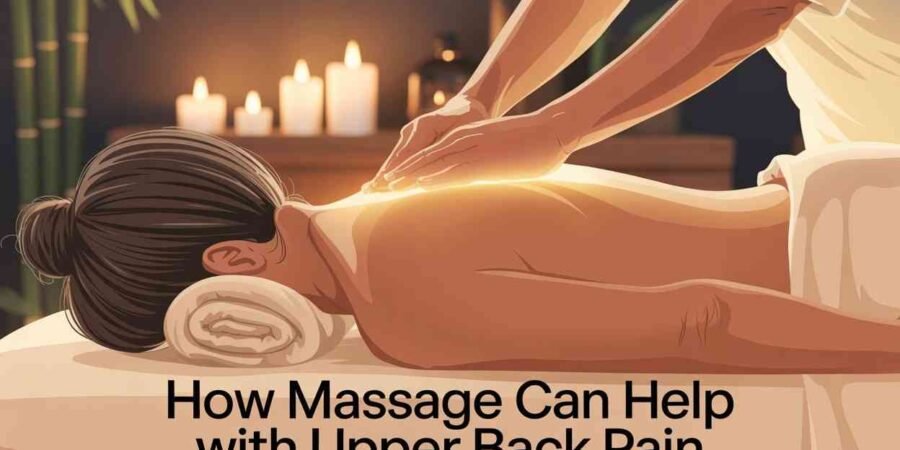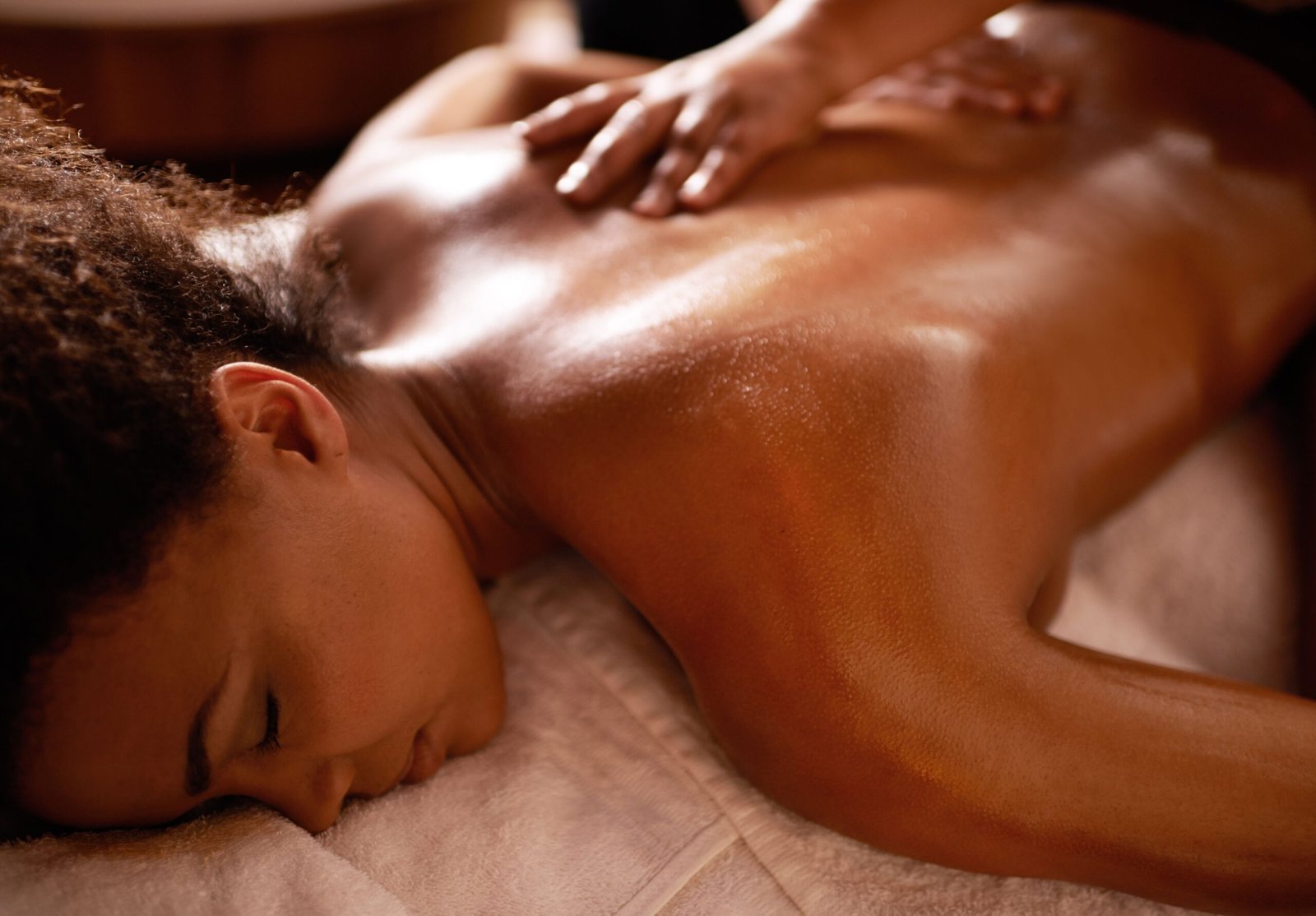If you’ve been experiencing upper back pain, I sympathise with how annoying it is. Whether it’s a sting, tightness or ache, it becomes difficult to concentrate, sleep or even unwind. I know because I have been there as well. When nothing seems to work, it can feel exhausting to look for a solution. But one of the things that really works well for me is massage. It not only provides pain relief but also assists with overall relaxation. But if you’re wondering how massage may benefit your upper back pain, let’s just dive in.
Why Upper Back Pain Happens
Before I started researching massages, I wanted to know why my upper back was so sore in the first place. You would be surprised at how common upper back pain actually is. Much of it is about everyday habits. For example, our seated position can build up tension. If you’re hunched over a desk or holding your neck at an awkward angle while scrolling through your phone, that can put strain on your back muscles, she said. Not until my own pain intensified did I pay attention to how I held myself throughout the day.
I also understand that stress is a major contributing factor. Have you noticed how your shoulders tend to inch up toward your ears when you’re anxious or stressed out? That tension doesn’t go away, however. It settles into your muscles. That stiffness becomes pain over the years. For me, it was like my upper back was bearing the burden of the world.
Others may have injuries in their upper back or overwork the muscles in this area during exercise. And honestly people are ignorant most times until it gets bad. That’s what I did until I decided to try therapy. And I’m so glad I did.
How Massage Can Help With Upper Back Pain
What surprised me most with massage was how quickly it brought relief. Initially, I thought, “How can massaging muscles change things so significantly?” But once you see how it works, it clicks.
No. Massage works by increasing blood flow to problem areas. More oxygen and nutrients are sent to the taut spots in your back, so those muscles can heal and reduce tension. The relief came so quickly for me. I felt that tension release like a boulder rolling off my back.
Another benefit? You have trained your body well to release endorphins through massage. These are your “feel-good” chemicals. They do more than enhance your mood; they also alleviate pain. After my first massage for my upper back pain, I can honestly say I felt like I was floating. I hadn’t felt that immediate calm in what seemed like ages.
Massages massage and they help knots. Have you ever experienced those tender, hard spots in your back? Those are muscle knots, and they hurt as much as they sound. An experienced massage therapist will know where to find and relieve them. The first time a therapist untangled one of my knots, I won’t lie, it hurt a bit. But afterward? It felt amazing. The pain was gone, and my muscles released and were free, again.
Massage Can Help With Upper Back Pain

7 Different Types of Massage Should I Get for Upper Back Pain?
Not all massages are created equal, however. I learned this the hard way when I sought a general massage that didn’t actually help my pain. Choosing the type of proper massage is vital to your needs. Here are some things I have tried:
Swedish Massage
Techniques may include gentle kneading and long strokes, rapid tapping, vibration, or the act of applying pressure on the trigger points of a muscle. It’s a gentle and very calming experience. The therapist uses long, sweeping strokes that relieve tension and boost circulation. When my back isn’t agonizingly painful, but feels stiff or fatigued, I often get a Swedish massage. It feels like a nice refresh for my muscles.
Deep Tissue Massage
Now if you are much more in pain or have very deep knots in your back, then a deep tissue massage may be a better fit. This type of massage applies firm pressure to reach the deeper layers of muscle. I’ll be honest, it can get a bit uncomfortable at times — the “hurts so good” feeling. But once you do, you won’t be able to avoid a noticeable difference. If you suffer chronic pain in your upper back, it’s worth it.
Trigger Point Therapy
In my experience, this is one of the best types of massage for upper back pain. It addresses areas of muscle tightness that are specifically causing pain When I had a really bad knot in the shoulder blade, trigger point therapy really changed the game. The therapist pressed on the precise trouble spot, and though it was painful for a couple of seconds, the relief was glorious.
Hot Stone Massage
If you’d prefer something more low-key but effective, though, hot stone massage is incredible. They put warm stones on your back, and I think the heat makes your muscles loosen up. It may not dig as deep as other massages, but it feels divine. After my first hot stone massage, I remember thinking: Why hadn’t I done this before? The heat melted away so much of the tension I had been holding in.
Self-Massage Techniques
You don’t need to always see a professional. Some days I roll out knots in my upper back with a foam roller or massage ball. It’s not a replacement for an actual massage, but it’s nice to help in between. A heated massage pad can do wonders as well. For those days that I only need relief fast, these are lifesavers.

Barriers to Getting a Massage
Before you frantically try to schedule a massage, there are a few things to consider. Communicate your needs, first and foremost. Originally published in October 2019 | I was shy when I first launched into massages, and I didn’t explain how much pain I was in. The therapist can’t help you if they’re not aware of what’s wrong, so don’t pull punches. Tell me what hurts and what level the pain is at.
If your pain is serious or if you’re not sure what’s causing it, you will also want to check with your doctor. Occasionally, problems such as a herniated disc or a nerve issue can cause pain that feels muscular. Massage may still be helpful in those situations, but rule out anything serious first.
Brace for some discomfort, especially if you’re getting a deep tissue massage. But keep in mind this is for a temporary period of time, and usually worth it. And if it’s a bit much, just let me know. A good therapist will calibrate the pressure to match your comfort level.
How to Make Massage a Regular Part of Your Life
Here’s the thing about massages — they’re most effective when you have them regularly. One session may provide relief, but the benefits accumulate over time. I get a massage every couple of weeks, and that has really helped. My upper back pain is much more manageable.
But massages are not my sole mode of therapy. Being active and stretching regularly a big difference too. Yoga particularly helps me loosen up my upper back. I also have worked on straightening my posture. Notice: The time-honored suggestion to sit up straight throughout the day has spared me a world of pain. Massage is one thing, but it’s even better when it’s combined with healthy life habits.
If you’re dealing with upper back pain, I urge you to not ignore it as I did. Massage may be considered a luxury, but it’s really a powerful healing tool. Whether you’re struggling with stress, poor posture or a knot in your back, it can make all the difference in the world. Trust me, I know from experience. A good massage will not only relieve your pain; it can also enhance your full health.
You should feel good in your own body. Make that first appointment, or even attempt a self-massage if you’re not yet ready for a professional. Your back will appreciate it, and so will your mind







